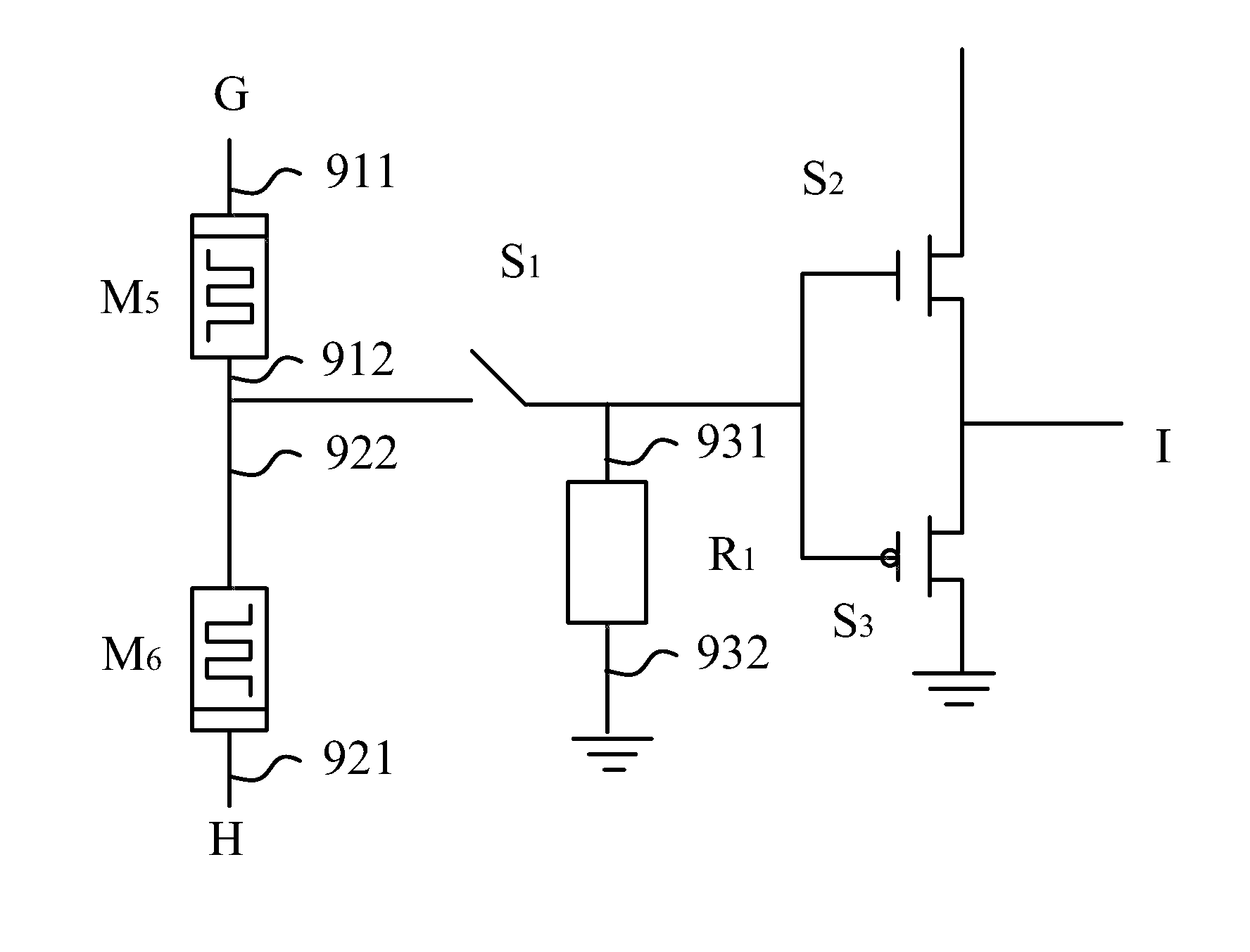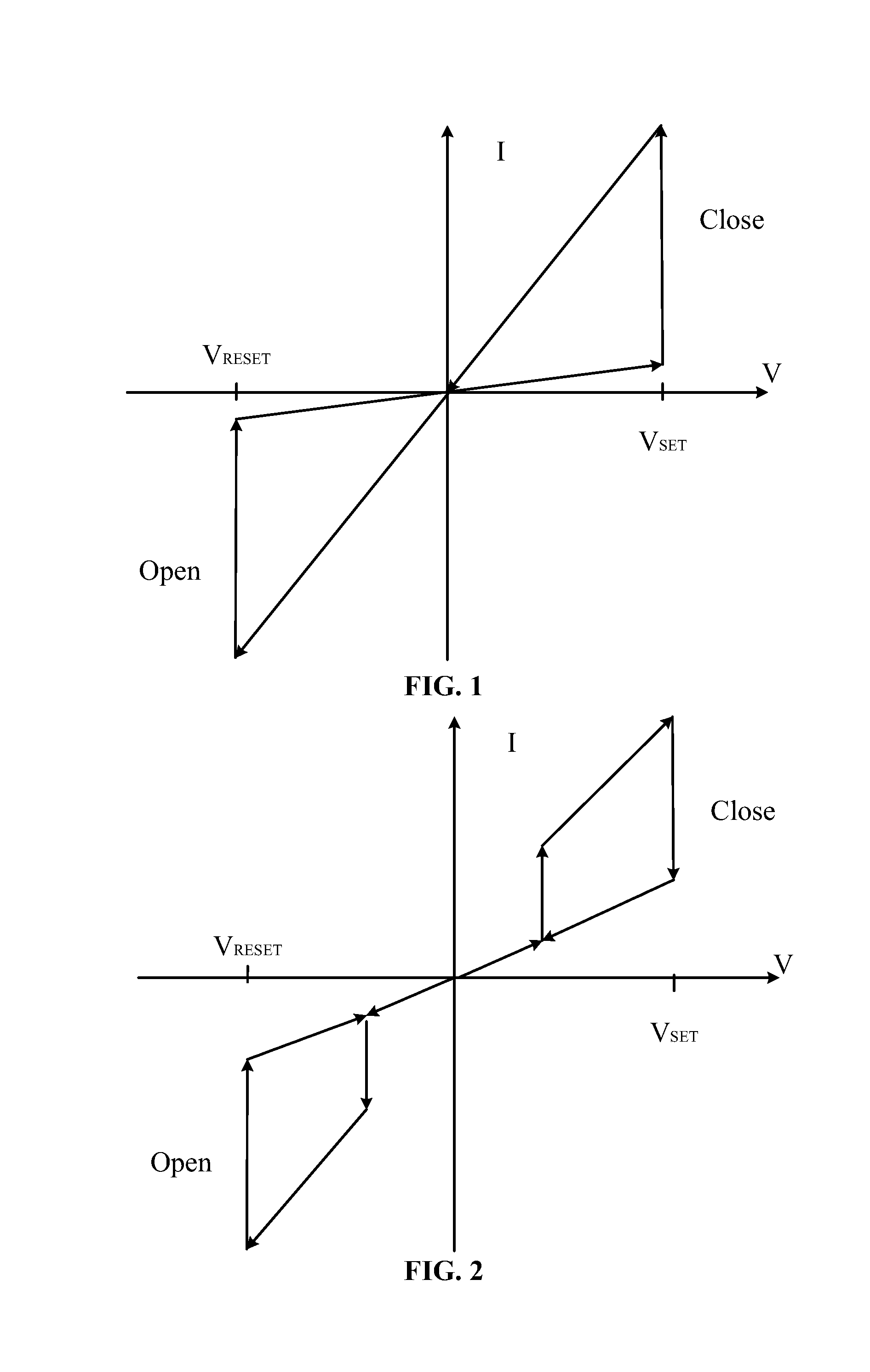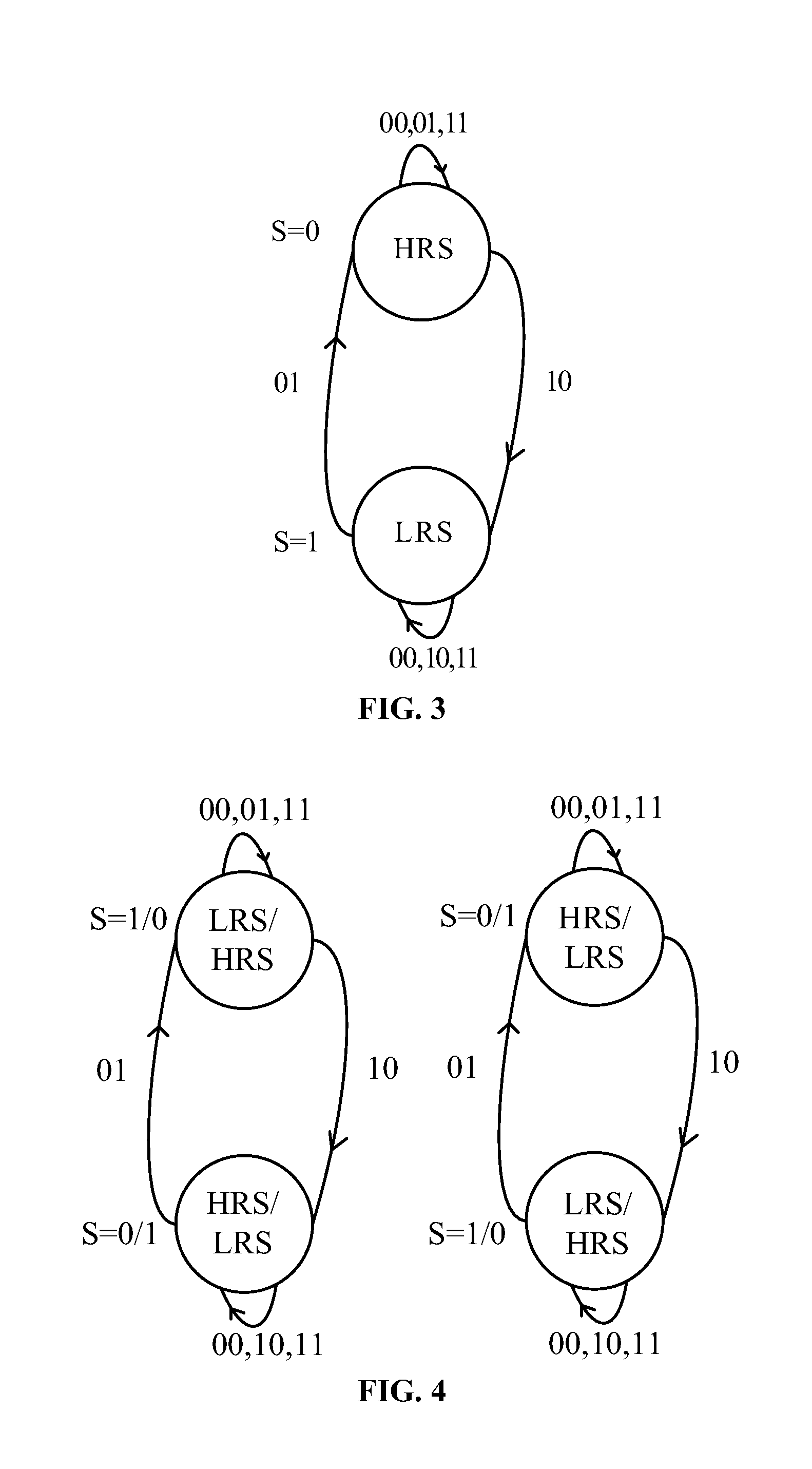Non-volatile boolean logic operation circuit and operation method thereof
- Summary
- Abstract
- Description
- Claims
- Application Information
AI Technical Summary
Benefits of technology
Problems solved by technology
Method used
Image
Examples
first embodiment
[0139]FIG. 5 is a schematic diagram of a non-volatile Boolean logic operation circuit of a first exemplary embodiment of the invention. For the purpose of clear illustration and as an example, a resistive switching element is labeled as a memristor. It can be understood by those skilled in the art that the resistive switching element can be a magnetic random access memory (comprising a spin transfer torque magnetic random access memory (STT-MRAM), a magnetic tunnel junction element (MTJ), a spin valve and so on), a resistive memory, a phase change memory, or other types of resistive switching elements that are capable of reversely changing states in the high resistance state or the low resistance state. As shown in FIG. 5, the logic operation circuit of the first embodiment comprises a first resistive switching element M1, and a second resistive switching element M2.
[0140]A first end 511 of the first resistive switching element M1 operates as a first input end of the logic operation...
second embodiment
[0199]FIG. 7 is a schematic diagram of a non-volatile Boolean logic operation circuit of a second exemplary embodiment of the invention. For the purpose of clear illustration and as an example, a resistive switching element is labeled as a memristor in FIG. 7. It can be understood by those skilled in the art that the resistive switching element can be a magnetic random access memory (comprising a spin transfer torque magnetic random access memory (STT-MRAM), a magnetic tunnel junction element (MTJ), a spin valve an so on), a resistive memory, a phase change memory, or other types of resistive switching elements that are capable of reversely changing states in the high resistance state or the low resistance state. As shown in FIG. 7, the logic operation circuit of the second embodiment comprises a third resistive switching element M3, and a fourth resistive switching element M4.
[0200]A first end 712 of the third resistive switching element M3 operates as a first input end of the logi...
third embodiment
[0276]FIG. 10 illustrates a schematic diagram of a non-volatile Boolean logic operation circuit of a fourth exemplary embodiment of the invention. Difference between this embodiment and the third embodiment in FIG. 9 is that, in this embodiment, the voltage converter is formed by a pair of voltage control switches. In this embodiment, the voltage control switch is a field effect transistor. Referring to FIG. 10, the non-volatile Boolean logic operation circuit of this embodiment comprises: a fifth resistive switching element M5, an sixth resistive switching element M6, a first resistor R1 (voltage dividing resistor), a field effect transistor S1, a field effect transistor S2, and a field effect transistor S3. The field effect transistor S2 and the field effect transistor S3 form a voltage converter, and a polarity of the field effect transistor S2 is opposite to that of the field effect transistor S3, namely, if the field effect transistor S2 employs a N-type field effect transistor...
PUM
 Login to View More
Login to View More Abstract
Description
Claims
Application Information
 Login to View More
Login to View More - R&D
- Intellectual Property
- Life Sciences
- Materials
- Tech Scout
- Unparalleled Data Quality
- Higher Quality Content
- 60% Fewer Hallucinations
Browse by: Latest US Patents, China's latest patents, Technical Efficacy Thesaurus, Application Domain, Technology Topic, Popular Technical Reports.
© 2025 PatSnap. All rights reserved.Legal|Privacy policy|Modern Slavery Act Transparency Statement|Sitemap|About US| Contact US: help@patsnap.com



